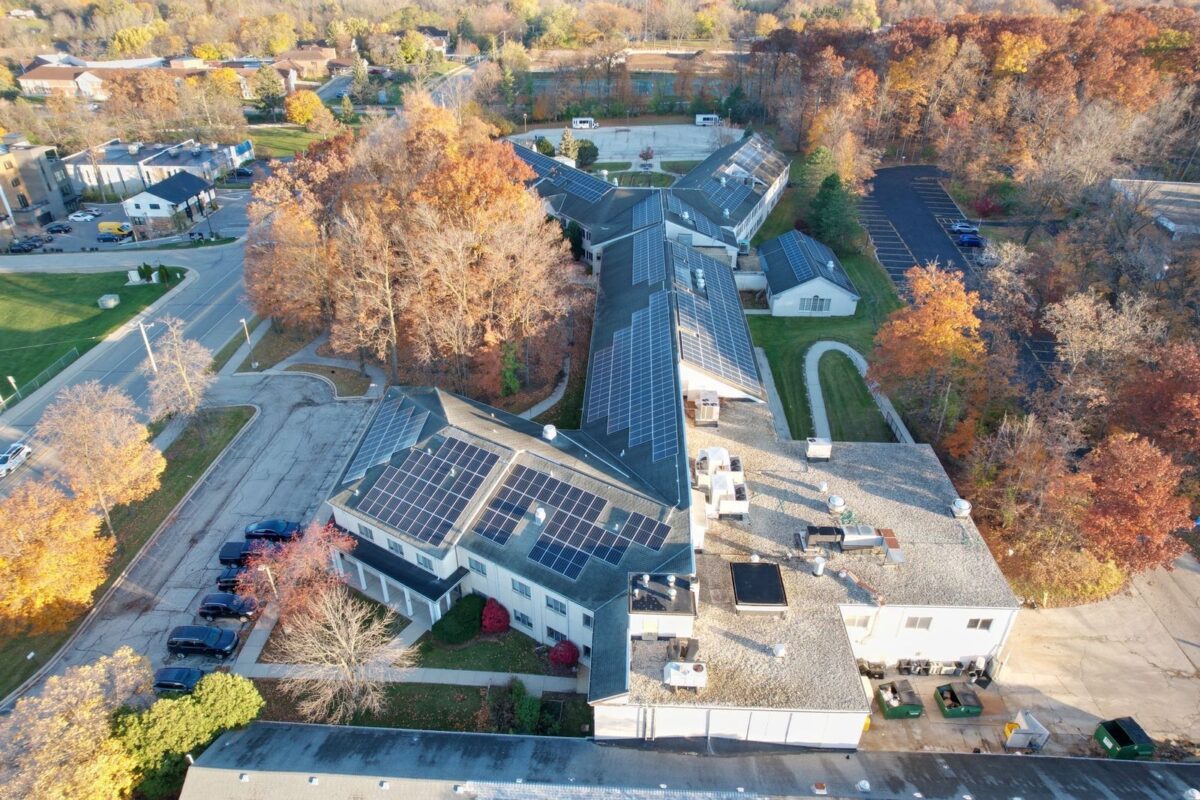Over the past 20 years, commercial retail prices for electricity in the US have risen by more than 50 percent, and rates in several mid-Atlantic states increased by nearly a quarter between 2021 and 2022.
While few could have foreseen the turbulence, Wilson Chang, climate tech entrepreneur and CEO of Sunrock Distributed Generation, sees significant opportunity amid a rebound in growth for the US solar sector beginning in 2024. Here, Wilson shares his thoughts on the incredible energy demands of AI, why forecasters of recession have completely missed the mark, and why there will be a solar system on nearly every rooftop.
We are at the dawn of a dramatic increase in electricity consumption from electric vehicles, artificial intelligence, crypto, and a digitizing world.
The power grid is set to be strained more than ever before as electric vehicles are being plugged into the grid, but the smart money already understood that renewable energy is quickly displacing oil in vehicles. To put it in perspective, oil is only competitive with solar generation at $10 per barrel because of the unavoidable heat loss from combustion, and green electricity is set to get massively cheaper over time. This has become an increasingly relevant comparison in the last few years now that EVs have started to plug into the grid and demand massive amounts of energy.
Meanwhile, the endless fascination humans have over AI, crypto, and all things funded by Silicon Valley have led to massive increases in computing power needs. Generating a handful of AI images uses as much
energy as charging your cell phone, generating AI text could power an LED light, and even Bitcoin consumes around the same as the entire country of Norway – by comparison, the human brain uses as much energy as a light bulb. Before humans even contemplate AI taking over the world, AI will need to build out a lot more power sources first!
Escalating power demand will drive up retail power rates in 2024 and beyond, further exacerbated by geopolitical instability, and aging transmission infrastructure.
The inability of human beings to find peace is driving volatile energy prices across the world. As the violence in Ukraine continues, and the conflict over Gaza metastasizes into broader conflicts, geopolitical violence is driving instability and volatility in traditional energy prices. Sadly, this drives up both the human and capital cost of legacy power generation across the world.
Additionally, approximately half of retail energy prices are driven – not by the cost of energy – but by the aging cost of transmission infrastructure, which led to the bankruptcy of PG&E from the California wildfires. Accidents and surging transmission costs from a legacy centralized power grid will unfortunately continue until utilities and their regulators eventually and inevitably turn towards a more decentralized and distributed grid. However, good ideas don’t stand still, and this is already being pioneered by the many individuals and businesses putting in their own solar, storage, and electrification equipment.
The Inflation Reduction Act (along with other bills like the CHIPS Act) is preventing a recession and catalyzing the American economy towards greener infrastructure.
Economic forecasters reading the tea leaves of recession in 2023 were uniformly surprised by the strength of the underlying economy. With the recent holiday season being one of the strongest travel years on record, the resilience of the economy surprised many, when it shouldn’t have.
According to Goldman Sachs, the Inflation Reduction Act (IRA) is unleashing $1.2 trillion of government spending and tax cuts into the economy, which is larger than the Interstate Highway Act of 1956 that built the American highway system and even larger than FDR’s New Deal which pulled the American economy out of the Great Depression.
While the cost of money has escalated in part because of the sheer supply of Treasury bills hitting the market, many economic forecasters did not consider the scale of the spending on the other end which is estimated to stimulate three times more private sector spending. The IRA will drive solar panel costs to pennies per watt (nearly free) by the end of this decade, and the CHIPS Act will drive a (partial) reshoring of an enormously complex semiconductor manufacturing industry.
Companies, real estate owners, and consumers are driving demand for sustainable products, energy, and buildings.
The green trend is fundamentally a grassroots movement and is growing rapidly. Consumer preferences for sustainable products are at an all-time high, and Gen X, Millennials, and Gen Z overwhelmingly prefer green and sustainable products and solutions.
The tide of ESG flows of capital will not be stopped by a handful of attempts at political grandstanding. The trend will change and adapt, but capital flows as a reflection of humanity’s search for a sustainable way to live on the planet will continue.
There will be a solar system on almost every rooftop in the near future and it will be built by individuals and the local community – not by utilities.
Even though 2023 was a brutal year for the U.S. solar industry due to rising interest rates and California’s change to the net metering regulations at the behest of its utilities, the future of the solar industry remains bright. Today businesses and individuals can install and build their own power generation systems using solar panels at lower costs than even state-protected utilities operating at scale can provide to us. The pace of innovation is accelerating, the changing tide is inevitable, and the future is clear.
As most building rooftops will ultimately have a solar system paired with batteries and EV charging, solar serves as the entry way to a more efficient, cleaner, and more reliable energy grid that is the most profitable part of the distributed electrification stack. Every $1 of behind-the-meter commercial solar spend today will lead to another $3 of storage, VPP, electrification, and additional infrastructure, representing a multi-trillion dollar opportunity. Solar panel costs continue to get cheaper, and many analysts estimate they will be approaching pennies per watt in only five years. Through its network of partners in all 50 states, Sunrock is helping businesses, building owners, nonprofits, and schools in local communities save money on their electricity bills by owning and managing complex generation systems on their behalf.

Wilson Chang was appointed chief executive officer of Sunrock Distributed Generation in February 2024. He was co-founder of Sunlight Financial. Bringing nearly two decades of experience in financing and building clean energy and technology companies, Chang is expected to spearhead Sunrock’s growth strategy in the U.S. by expanding both its new project pipeline and funding partnerships.
The views and opinions expressed in this article are the author’s own, and do not necessarily reflect those held by pv magazine.
This content is protected by copyright and may not be reused. If you want to cooperate with us and would like to reuse some of our content, please contact: editors@pv-magazine.com.








By submitting this form you agree to pv magazine using your data for the purposes of publishing your comment.
Your personal data will only be disclosed or otherwise transmitted to third parties for the purposes of spam filtering or if this is necessary for technical maintenance of the website. Any other transfer to third parties will not take place unless this is justified on the basis of applicable data protection regulations or if pv magazine is legally obliged to do so.
You may revoke this consent at any time with effect for the future, in which case your personal data will be deleted immediately. Otherwise, your data will be deleted if pv magazine has processed your request or the purpose of data storage is fulfilled.
Further information on data privacy can be found in our Data Protection Policy.